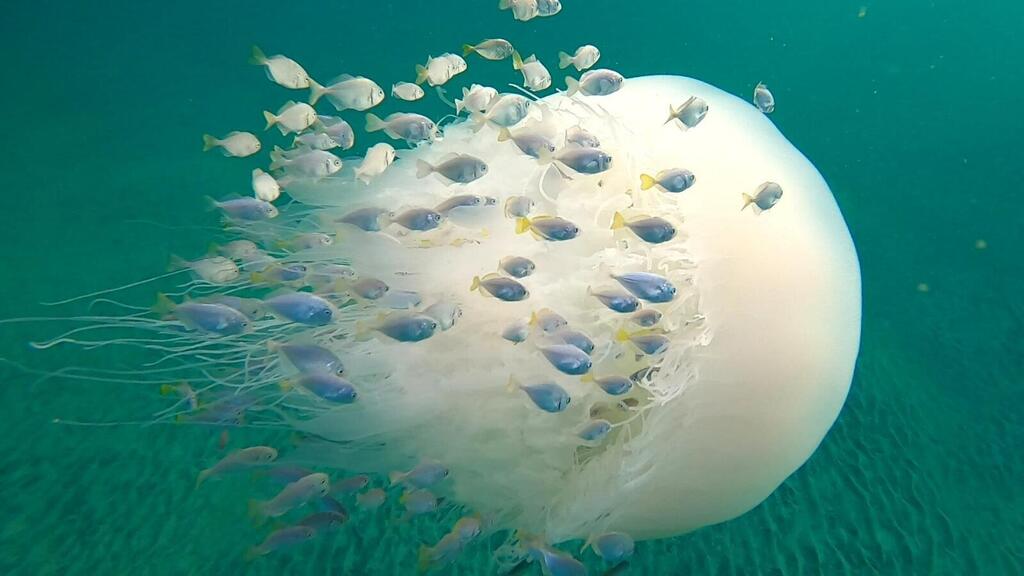Getting your Trinity Audio player ready...
Many jellyfish have arrived at most of Israel's beaches in recent months. The swarms filling the Mediterranean Sea always arrive from the south to the north, and so were first noticed on the country’s southern beaches. Currently, the Haifa coastline is still relatively free of jellyfish, but that too is about to change.
Dr. Dor Edelist, a marine ecologist from the University of Haifa and the Ruppin Academic Center, explained, "Last year was unusual. We didn't see many jellyfish in the summer. Then, we had a winter with a high number of jellyfish, and giant ones at that. We had a short break in the spring and a dense swarm of Rhopilema nomadica, the most common jellyfish, arrived in the country just this week."
He added the swarm is mixed with a few other, less stinging jellyfish species. "In the coming week, all of Israel’s beaches will be filled with jellyfish. The southern beaches are already full of them, and they’ll reach the north as well in the coming weeks," Dr. Edelist said.
There are many myths about what you should do when encountering these marine animals. Dr. Edelist explained there are several ways to avoid contact with stinging jellyfish. "You can wear a diving or surfing suit to protect yourself from stings," he said. "Additionally, there’s also sunscreen that can protect against stinging."
Dr. Edelist also advised on what to do in case of stinging. "Rinse the stung area with seawater only and treat the sting like a burn. Topical creams like aloe vera and others will suffice. About a year ago, we held an epidemiological survey that showed this was the correct treatment protocol for jellyfish stings. Not vinegar, urine, sand, or other reported methods."
Much about jellyfish swarms remains unknown. What causes them to appear and where do they come from? Things aren’t entirely clear. "We still don't really know," said Dr. Yoav Lehahn, a researcher at the University of Haifa’s School of Marine Sciences.
The Rhopilema nomadica was first observed in the Mediterranean in 1977 and has since made a regular appearance in our region. "There are years, for reasons we don't understand, when the swarms don't appear, like what was seen last year. This is the kind of research we're conducting here. It's a very interesting research question. We're trying to understand where they come from and what drives their movement. We know they drift with the currents, but they also swim," Dr. Lehahn added.
In July 2022, a swarm of giant jellyfish reached Israel's beaches, providing spectacular images that made the Mediterranean appear infested. For now, the images of the stinging creature have become routine.




